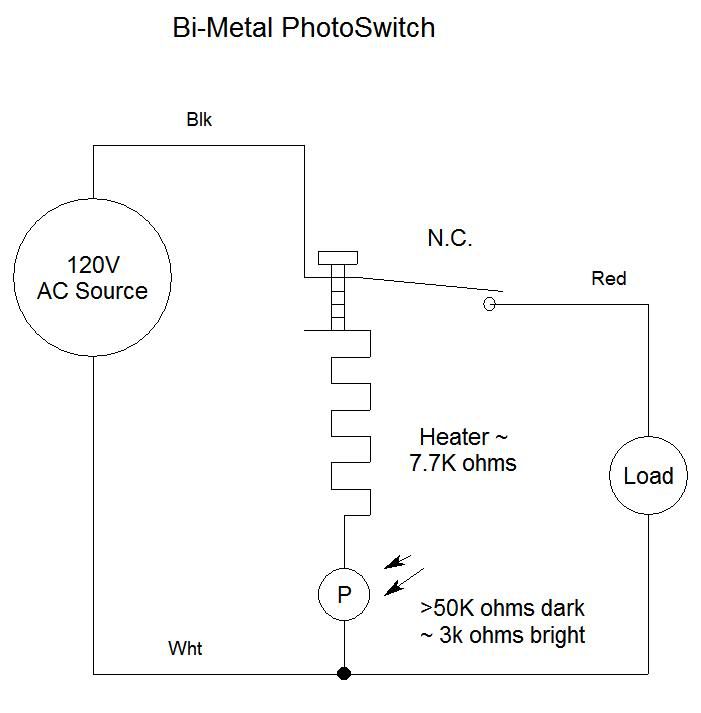Nice diagram, but I have one problem, how does the heater cool off when the load is removed with power still applied to the photo cell? I have replaced hundreds of burned out lamps in post lights (popular around here) and every time the new lamp will light and go out after about 2-5 minutes, the photo cell I took apart had a resistor between the load terminal (red wire) and the point between the heater and photo resistor, it looked kind of like another part of the heater as it was wire wound, but wasn't close enough to the bi-metal plate to be part of the heating to open the contact.
So ok to make sure my mind is not going berserk on me, I just went out to my garage and hooked up a temporary lamp holder and a button photo cell I have for a job I'm doing tomorrow, (Kid's don't try this at home)

I screw in a 60 watt lamp let it cycle off, unscrew the lamp wait 2 min's screw it back in, it stayed off, unscrew it again this time wait 10 min's screw it back in it comes on and 2 min's goes back out?

all the time power wasn't removed from photo cell, next I hook up a two wire dimmer load side of photo cell, I turn it full bright lamp goes out, turn it off wait 10 min's turn it back on but leave it 80% dimmed barely glowing, lamp never goes out, last test, screw in a 4 watt (25 watt equivalent CFL) photo cell never shuts off? try a 7 watt (40 watt equivalent CFL) this one did shut off, but I have had problems with a 7 watt CFL before, 13 watt's CFL's work just fine, but if LED's only pull a few watt's they might be a problem, never tried them yet.


